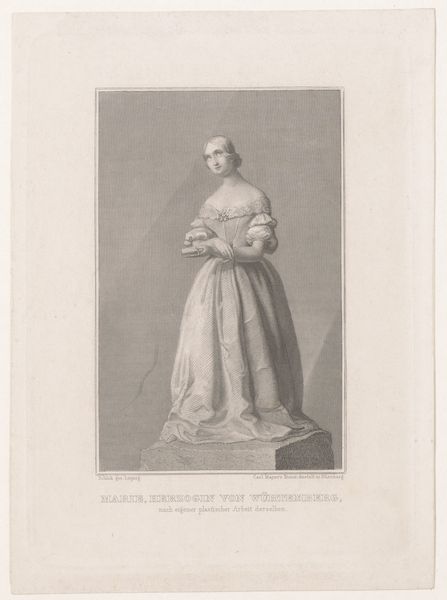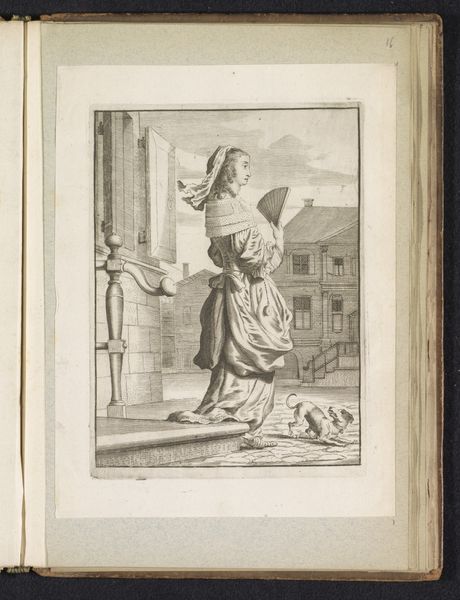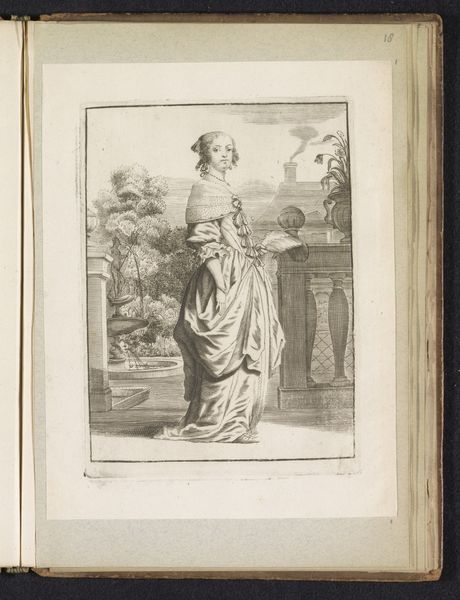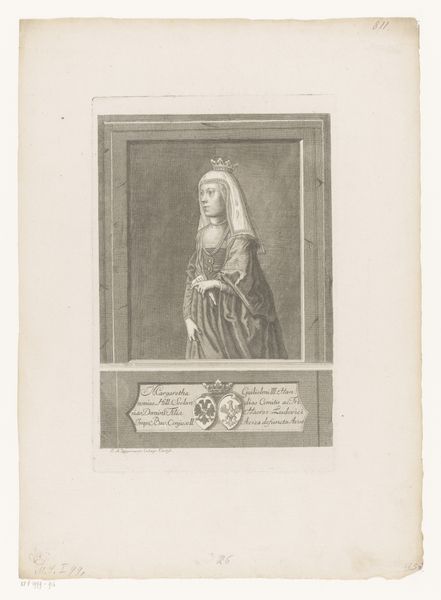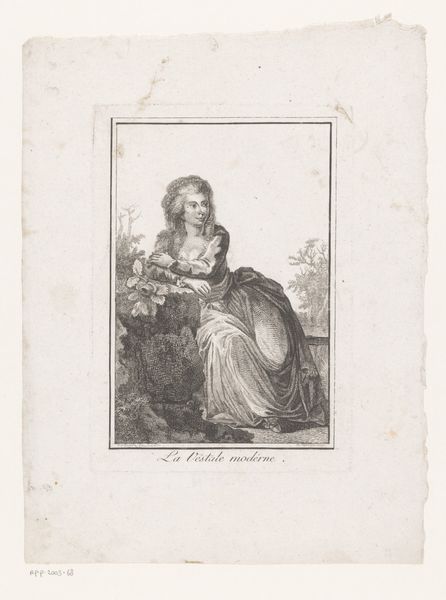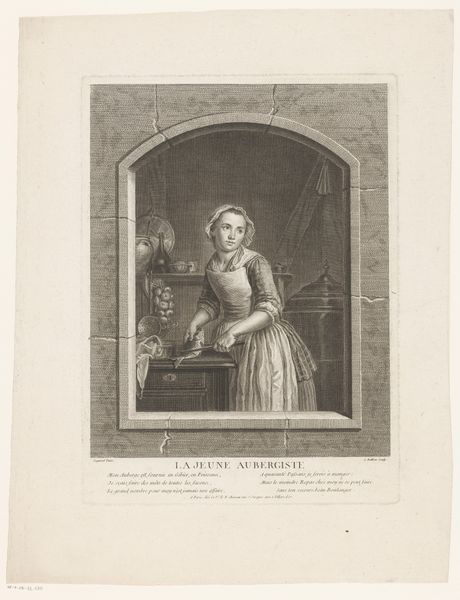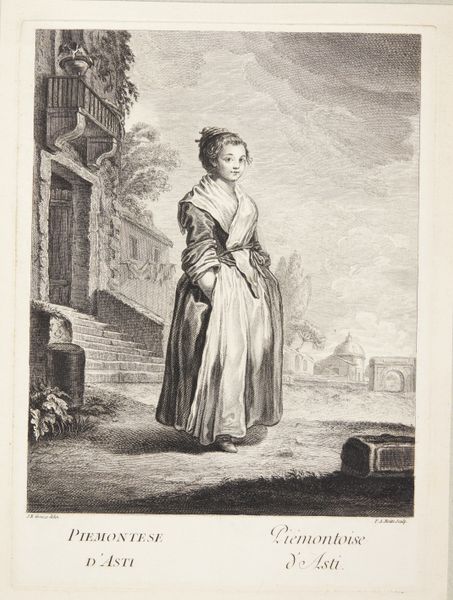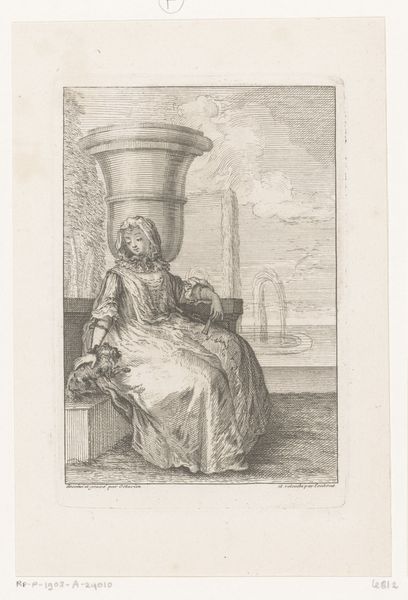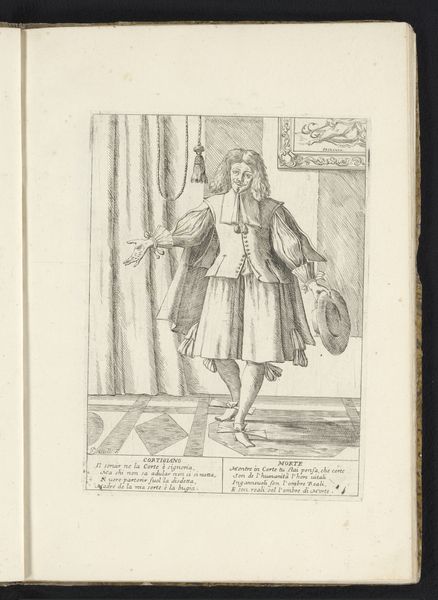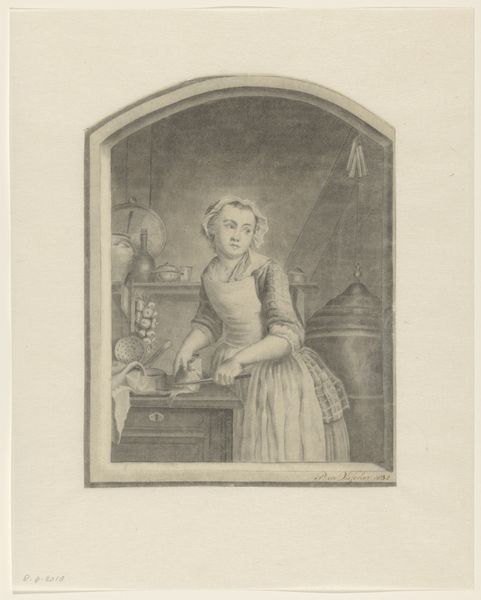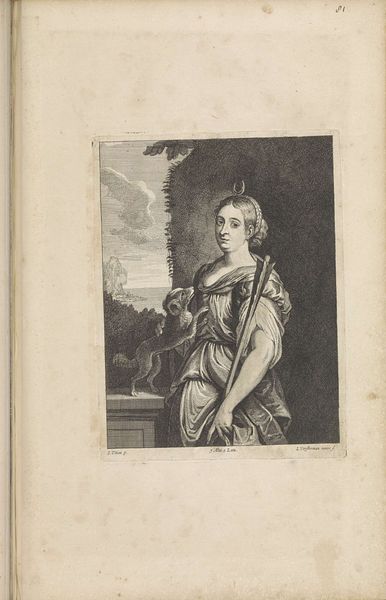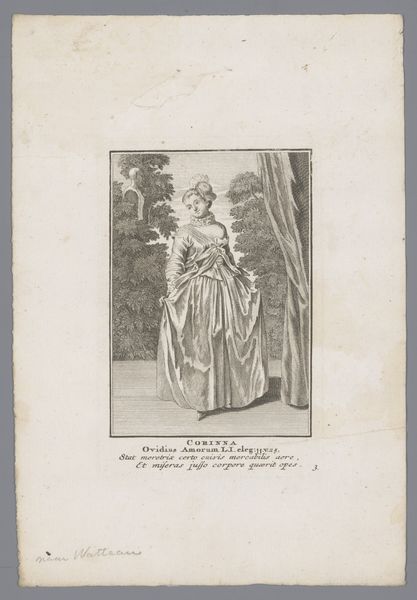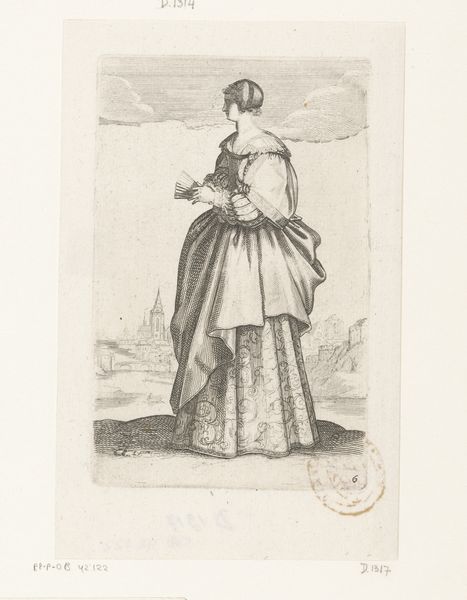
print, engraving
#
portrait
#
neoclacissism
# print
#
academic-art
#
engraving
Dimensions: height 128 mm, width 88 mm
Copyright: Rijks Museum: Open Domain
Curator: This is Friedrich Fleischmann's 1821 engraving, "Portret van Eginhard," currently held in the Rijksmuseum collection. Editor: A hushed stillness radiates from this portrait. There's a softness despite its being rendered in engraving. What's your first read? Curator: It’s neoclassical in style, referencing classical portraiture while portraying Einhard, Charlemagne’s biographer. Notice the academic precision of the line work and the balanced composition? Editor: Absolutely, and the way the architectual details create a symbolic backdrop to suggest that Einhard existed in a landscape filled with the legacies of scholarship, learning and political intrigue, given his prominent place at court. The architectural references behind him are fascinating. Is that an imagined Roman past? Curator: It appears to be an idealized vision of Carolingian court life infused with elements of Roman grandeur, a common motif in Neoclassical art. I imagine this was intentional. Einhard, portrayed almost as a noble scholar, frozen in the silent moment before his great writing, in service of a heroic and noble vision of Charlemagne and his reign. Editor: Right. It pulls from history to tell us more about what these movements and artists want us to believe in. There's such control to it all. The clothing seems designed to indicate a figure rooted in historical legitimacy, yes? Curator: Precisely! The engraving technique, while seemingly restrictive, provides such opportunities for details that help contextualize our understanding and impressions of his significance and influence as both advisor to Charlemagne and an important historical figure in his own right. Editor: Which makes me think that the selection of engravings as the method is also of high symbolic importance too. The act of impressing onto the plate with great control becomes akin to acts of statecraft and scholarship; it implies that this form is of paramount important, maybe moreso than paintings. I find myself admiring it and respecting the craft all the more for considering this element. Curator: Yes. Perhaps. This discussion reminds me that behind every representation there lies the act of someone doing. Every tool tells you about that gesture and intention. And the image becomes so much richer! Editor: Precisely; it reminds us of all the cultural information being transmitted.
Comments
No comments
Be the first to comment and join the conversation on the ultimate creative platform.
